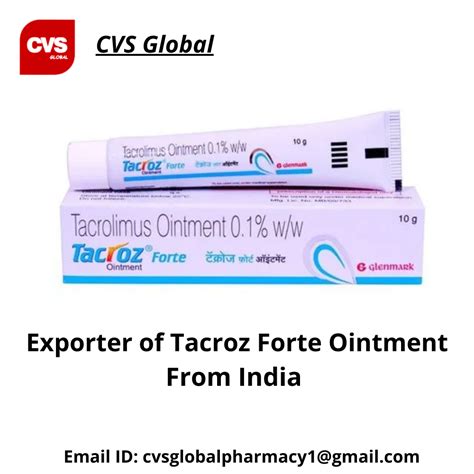The constant struggle with itchy skin conditions can be a daunting experience, affecting not only the physical well-being but also the emotional and psychological state of an individual. Conditions such as atopic dermatitis, also known as eczema, can lead to relentless itching, redness, and discomfort, significantly impacting the quality of life. Among the various treatments available, topical immunomodulators have emerged as a promising solution, with Tacrolimus ointment 0.1% being a notable example. This article delves into the realm of Tacrolimus ointment, exploring its mechanism of action, efficacy, potential side effects, and its place in the management of itchy skin conditions.
Understanding Itchy Skin Conditions
Before diving into the specifics of Tacrolimus ointment, it’s crucial to understand the nature of itchy skin conditions, particularly atopic dermatitis. Atopic dermatitis is a chronic inflammatory skin disease characterized by dry, itchy, and scaly skin. The exact cause is unknown, but it is believed to involve a combination of genetic, environmental, and immune system factors. The condition can significantly impact an individual’s daily activities and sleep patterns due to the persistent itching and discomfort.
Mechanism of Action of Tacrolimus
Tacrolimus belongs to a class of drugs known as topical immunomodulators or calcineurin inhibitors. It works by modulating the immune system’s response to reduce inflammation and itching associated with conditions like atopic dermatitis. Unlike topical corticosteroids, which have been the mainstay treatment for such conditions, Tacrolimus does not cause skin thinning or other steroid-related side effects with long-term use. This makes it a valuable alternative for patients requiring prolonged treatment.
Efficacy of Tacrolimus Ointment 0.1%
Numerous clinical trials and studies have demonstrated the efficacy of Tacrolimus ointment 0.1% in treating atopic dermatitis and other itchy skin conditions. It has been shown to significantly reduce the severity of symptoms, including itching, redness, and the extent of the affected area. Patients often experience relief from symptoms within a few weeks of starting treatment, although individual responses may vary.
Potential Side Effects
While generally well-tolerated, Tacrolimus ointment 0.1% can cause some side effects, particularly during the initial stages of treatment. The most common side effects include a burning or itching sensation at the application site, which typically subsides as the skin becomes accustomed to the medication. Less commonly, patients may experience redness, rash, or acne-like eruptions. Rare but more serious side effects can occur, including an increased risk of skin infections and potential effects on the immune system, although these are infrequent with topical use.
Practical Application and Usage
For individuals considering Tacrolimus ointment 0.1% as a treatment option, it’s essential to follow the application instructions carefully. The ointment should be applied thinly to the affected areas, usually twice a day, although the frequency may be adjusted based on the severity of the condition and the patient’s response. It’s also important to avoid applying the ointment to open wounds or sensitive areas, such as the eyes, and to wash hands thoroughly after application.
Comparative Analysis with Other Treatments
In the realm of itchy skin condition treatments, Tacrolimus ointment 0.1% stands out due to its unique mechanism of action and favorable side effect profile compared to traditional topical corticosteroids. While corticosteroids are effective, their long-term use can lead to significant side effects, including skin atrophy, telangiectasia, and perioral dermatitis. Tacrolimus, on the other hand, offers a similar level of efficacy without these drawbacks, making it an attractive option for both adults and children with atopic dermatitis.
Future Trends and Developments
The management of itchy skin conditions is an evolving field, with ongoing research aimed at developing more effective and safer treatments. Tacrolimus ointment 0.1% represents a significant advancement in this area, offering hope to individuals struggling with the discomfort and distress of atopic dermatitis and similar conditions. As our understanding of the immune system and skin biology deepens, we can expect the development of even more targeted therapies, potentially leading to better outcomes and improved quality of life for those affected.
Decision Framework for Treatment
When deciding on a treatment for itchy skin conditions, several factors must be considered, including the severity of the condition, the patient’s medical history, potential side effects, and the efficacy of the treatment. For mild cases, over-the-counter moisturizers and mild topical corticosteroids may suffice. However, for more severe or persistent conditions, a healthcare provider may recommend Tacrolimus ointment 0.1% or other stronger treatments. It’s essential to work closely with a healthcare professional to determine the best course of treatment, as they can provide personalized advice based on the individual’s specific needs and circumstances.
Conclusion
In conclusion, Tacrolimus ointment 0.1% emerges as a valuable treatment option for individuals dealing with the challenges of itchy skin conditions, particularly atopic dermatitis. Its unique mechanism of action, relatively favorable side effect profile, and efficacy in reducing symptoms make it a promising choice for those seeking relief from the discomfort and distress associated with these conditions. As research continues to advance our understanding of skin biology and the immune system, treatments like Tacrolimus ointment 0.1% will play a crucial role in improving the management and quality of life for individuals affected by itchy skin conditions.
What is the primary mechanism of action of Tacrolimus ointment 0.1% in treating itchy skin conditions?
+Tacrolimus ointment 0.1% works as a topical immunomodulator, modulating the immune system’s response to reduce inflammation and itching associated with conditions like atopic dermatitis.
How does Tacrolimus ointment 0.1% compare to traditional topical corticosteroids in terms of side effects?
+Tacrolimus ointment 0.1% has a more favorable side effect profile compared to traditional topical corticosteroids, particularly with long-term use, as it does not cause skin thinning or other steroid-related side effects.
What should patients expect in terms of relief from symptoms when using Tacrolimus ointment 0.1%?
+Patients can expect to experience relief from symptoms, including itching, redness, and the extent of the affected area, within a few weeks of starting treatment with Tacrolimus ointment 0.1%.



